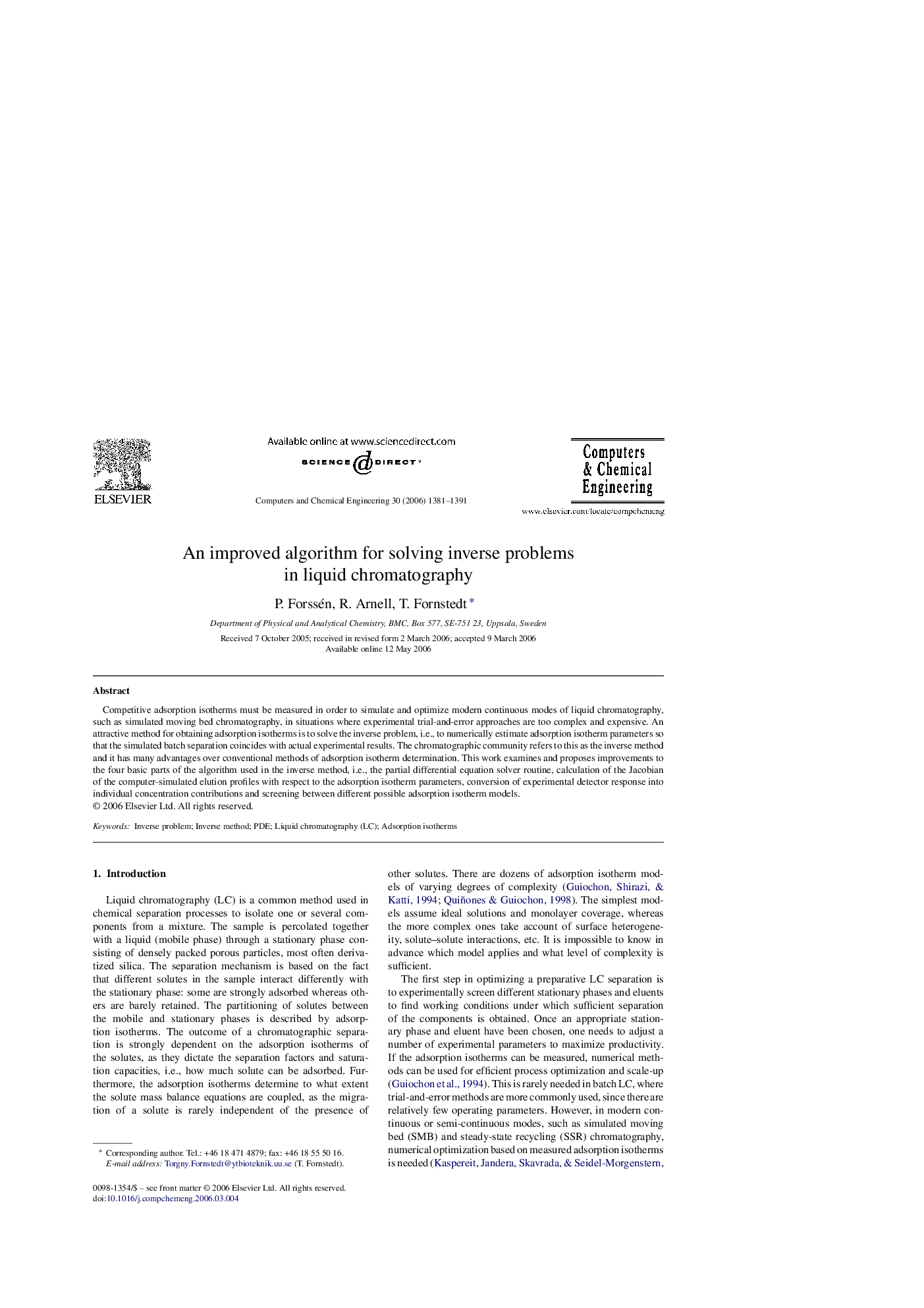| Article ID | Journal | Published Year | Pages | File Type |
|---|---|---|---|---|
| 174085 | Computers & Chemical Engineering | 2006 | 11 Pages |
Competitive adsorption isotherms must be measured in order to simulate and optimize modern continuous modes of liquid chromatography, such as simulated moving bed chromatography, in situations where experimental trial-and-error approaches are too complex and expensive. An attractive method for obtaining adsorption isotherms is to solve the inverse problem, i.e., to numerically estimate adsorption isotherm parameters so that the simulated batch separation coincides with actual experimental results. The chromatographic community refers to this as the inverse method and it has many advantages over conventional methods of adsorption isotherm determination. This work examines and proposes improvements to the four basic parts of the algorithm used in the inverse method, i.e., the partial differential equation solver routine, calculation of the Jacobian of the computer-simulated elution profiles with respect to the adsorption isotherm parameters, conversion of experimental detector response into individual concentration contributions and screening between different possible adsorption isotherm models.
